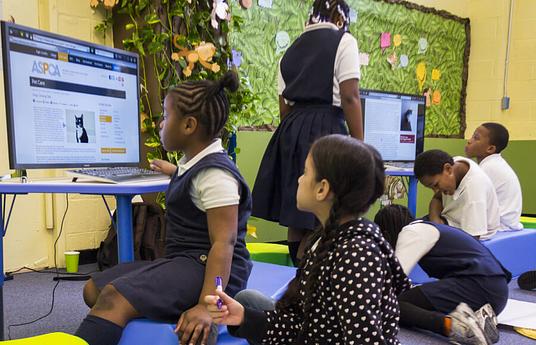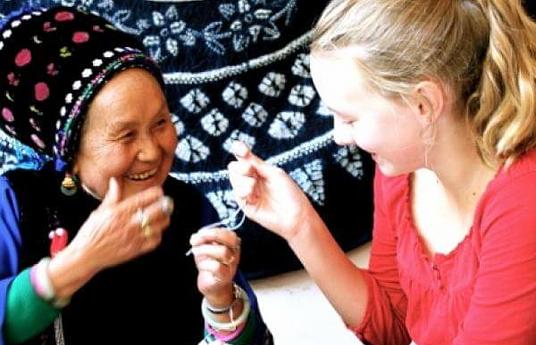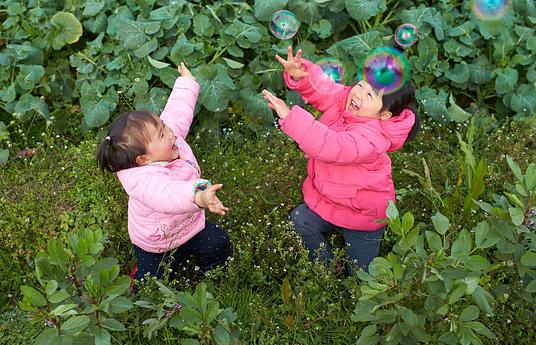Geography is destiny. This age-old phrase summarises how where you’re born determines the kind of life you are going to have. Your immediate surroundings will affect the kind of education you’ll receive, the opportunities available to you and the kinds of people you’ll meet and be influenced by.
In the time of the internet, however, this is changing. No longer does geography confine us, as we can communicate and learn from people across the globe – all you need is some kind of device and an internet connection.
This creates unprecedented challenges and opportunities for education. Particularly in a time when we are seeing the arrival of megacities. It’s predicted that by 2030, two thirds of the world’s population will live in cities, with only one third living in more rural locations.
Global strategist, Parag Khanna, poses the question, ‘Will mega cities become more important for maps rather than countries?’ in his Ted Talk, How Megacities are Changing the Map. Suggesting that perhaps people in cities across the globe from each other, will have more in common and communicate more than with their fellow citizens who live rurally.
The difference in opportunities between cities and rural communities has always existed, but the rapid expansion of city populations is creating a huge attainment gap between rural and city dwelling children. Rural communities often face higher teacher shortages, dangerous or long journeys to school, and can receive an education that is lacking in comparison to their city-dwelling peers.
However, there are people already all over the world who are dedicating their work to address this growing problem.
BRAC are tackling the growing threat climate change poses to schools in Bangladesh through their boat school programme. Bangladesh has been hit badly by flooding due to climate change in recent years, with up to two-thirds of the country being underwater at any one time. How can we stop children in these at-risk areas from falling behind or out of school?
Through providing boats, BRAC is able to bring education to these at-risk communities. The boats either act as a substitute classroom or as a service to get children to their school if possible. For those who use the boats as a substitute classroom, teachers are hired from the local community, creating floating schools during the monsoon seasons.
Committed to gender equality, the classes who use the boat schools are at least 50% female, making sure that when tackling the education-gap problem in Bangladesh, that girls don’t get left behind either. The local teacher on board the boat is also female and BRAC is careful to hire someone from the community that the children are from in order to strengthen the bond between the teacher and the students, and community as a whole.
As a result of this, learning tends to happen both inside and outside of the classroom, and this gives parents the opportunity to get more involved and learn more about their child’s education, helping to create a community who value education and understand its worth for their children.
The boat schools are also in operation in the Philippines, where they help to combat the racial prejudice and bullying some children face by providing them with a safe school environment. These boats provide a vital lifeline for children, protecting them from both abuse and from falling behind in their education. Not to mention the bright colours the boats are – helping to spark a little everyday joy in these children’s lives.

But it’s not just about physically providing children with a school environment, the connectivity available through technology means that children can learn – and not miss out on their education – even without a school building (or boat)!
Self-Organized-Learning-Environments, or SOLEs as they’re commonly known, are a unique and contemporary way of educating and learning where children teach themselves what they want to know through the internet. Professor Sugata Mitra, founder of SOLEs, discovered through his own studies that if you provide children with the tools to do so, children can teach themselves anything they want to know.
Children are more technologically literate than ever, so if education doesn’t provide the skills they want to learn or going to school isn’t an option, once a child has access to the technology they can teach themself anything they want to know. SOLEs are spreading across the world, reaching all the way from their origin in India to Colombia – where entire communities are using the SOLE approach to help them find answers to their own questions.
The Smart School Alliance approach uses a similar idea to SOLE, where children teach themselves through having access to the internet, but keeps the structure of school. Teachers in metropolitan areas or who have special areas of expertise connect with rural schools involved in SSA and teach the children via video. This allows for children to receive the same – or at least a similar level – of education that their urban peers are receiving, closing the attainment gap between rural and urban.
The interconnectivity approach also encourages young people to connect, engage and learn from others across the entire world. This helps to instigate intercultural dialogue, a key skill for our times, when we are going to need to understand each other and collaborate together to tackle the issues facing our planet, such as climate change, migration and new technologies.
The approach can also help teachers develop their skills too, after all, education is a life-long pursuit for all of us! As Ingvi Omarsson, an innovative Icelandic elementary teacher, explains, ‘I think the role of the teacher is to also be the lead learner, leading and showing students what it is to learn and that learning never stops. It's not a 40 minute session you can just do, it’s a lifelong process.’
Educators in Smart School Alliance can attend meetings, interactive seminars and workshops, and receive training in distance teaching skills in order to improve their teaching practices and keep them aligned with the changes happening in education and the world at large. Teachers are encouraged to co-create and co-prepare their lessons together and share equipment, fostering a supportive atmosphere for teachers to engage with each other and strengthening the education community.
The collaborative approach adopted by SSA has taken off in the last five years. Since 2013, they’ve impacted 750 schools and shared their work in over ten countries.
Increasing connectivity in schools doesn’t have to be a whole school model though, it can be installed into the school day through the simplest of tasks. HundrED Ambassador and Global School Teacher Prize finalist, Barbara Zielonka, uses connections-based-learning to help her students learn about the real world.
Using social media platforms such as Linkedin, Zielonka reaches out to experts and professionals to give Skype talks to her class about their careers and areas of expertise. Children can ask their own questions and can truly grasp how their education links to the real world. This is something increasingly important as motivation is a key issue for students today, and, as our recent report discovered, 83% of students want their subjects to be preparing them and giving them the skills they need for their future careers.
Children in cities can also benefit from learning and connecting with rural communities. Microcampus helps expat students to break out of their social bubble in order to truly connect with the country they now call home. Students spend a month living in a rural community of their host country and complete projects which heighten their intercultural understanding, including creating a short film where they document the histories of elderly residents.
This project not only encourages the students to learn about the experiences of others and increase their communication skills, but provides a way of capturing a way of life that may disappear from our world as megacities start to take over.
Living through an era where change happens suddenly can seem overwhelming in a sector that is notoriously slow, through no fault of its own, at adjusting to these changes. However, from huge steps such as creating boat schools to reach rural children impacted by climate change, to utilising the tools of the internet to give students the cultural understanding and global communication skills they need to thrive, to making sure that rural and urban children receive an equal education, there are people all over the world already creating the changes education needs. Parag Khanna argues that ‘connectivity is why cities thrive’. It’s clear that in education, connectivity can help children to thrive too.




